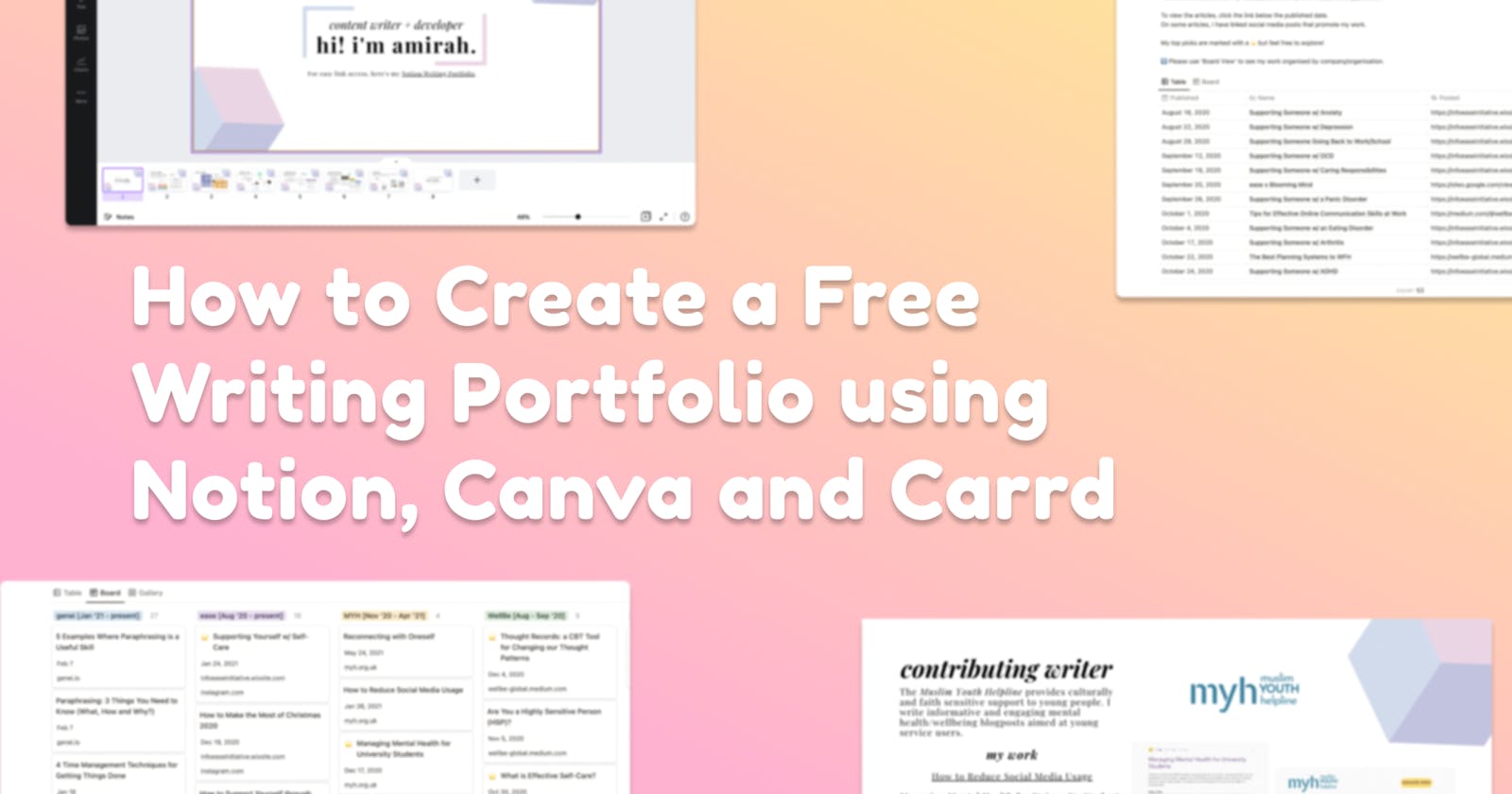The Writing Portfolio
If you're a freelance writer, editor, or simply someone who wants to keep track of your work overtime, a writing portfolio is important. This is the place to outline your experience, expertise and store the links to your published work.
Things to Include
Some good things to include in your writing portfolio are:
A brief summary of who you are, your experience and expertise
A short description of the blog / company / client you wrote for
The audience your writing was aimed at and the topics you covered
Links to published work
But, if you don't know how to code, and don't want to spend money on a website builder, how can you make one? Below, I'll share 3 free tools I've used for creating shareable and interactive writing portfolios.
3 Digital Tools to Create a Shareable Writing Portfolio
Notion
Notion was the first tool I used to create a writing portfolio. I created a Table with fields for Publish Date, Article Name, Link to Post, and Tags. For the Tags, I created custom tags for each of my writing roles. Here's a snapshot of the Table view:
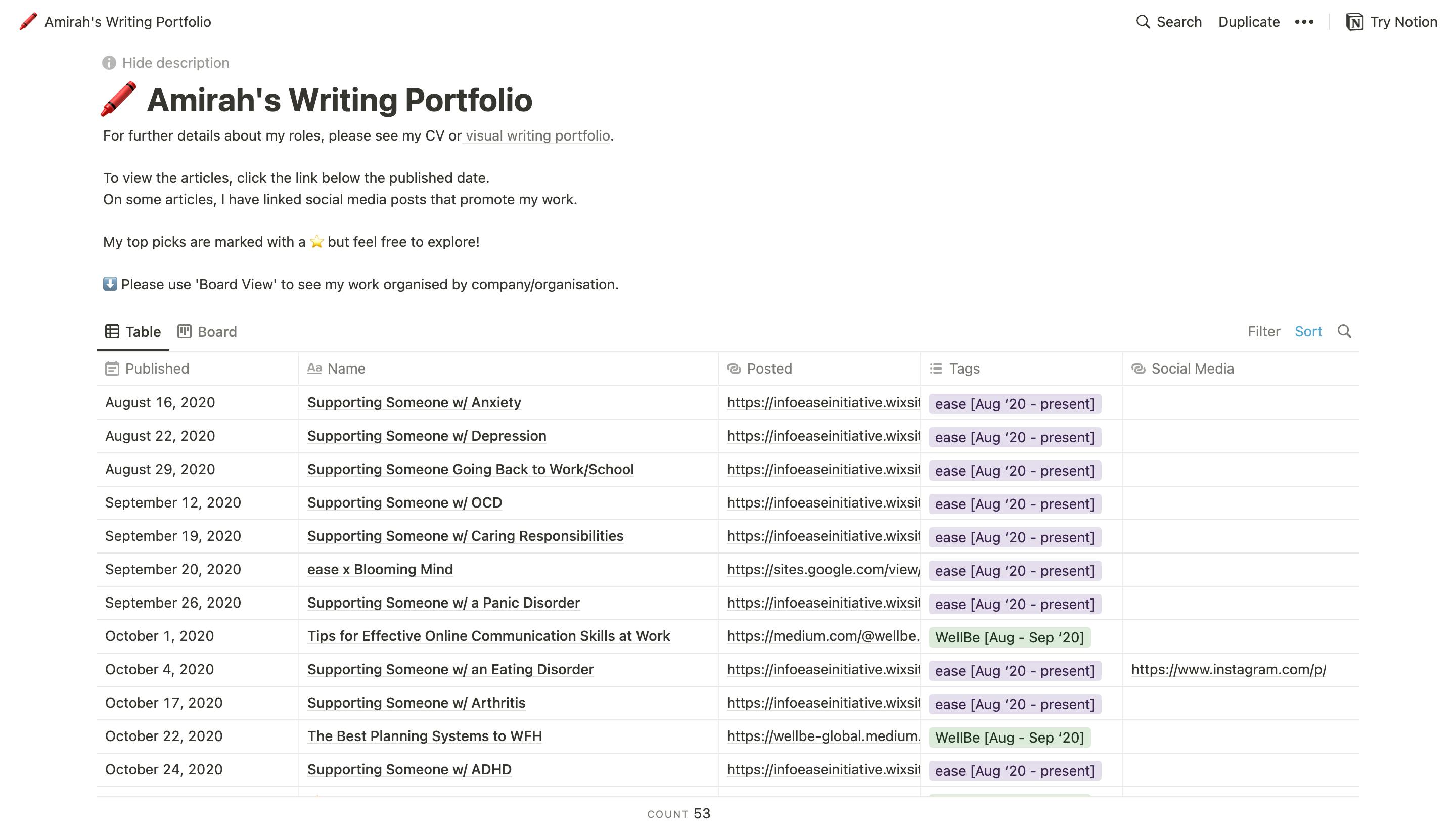
The reason I chose Notion was because it uses databases. The information I stored in the Table could be visualised in a number of ways simply by changing the view. I could then sort or filter those entries using the fields I chose. For example, here's how I used the Tags to group my work in a Board view:
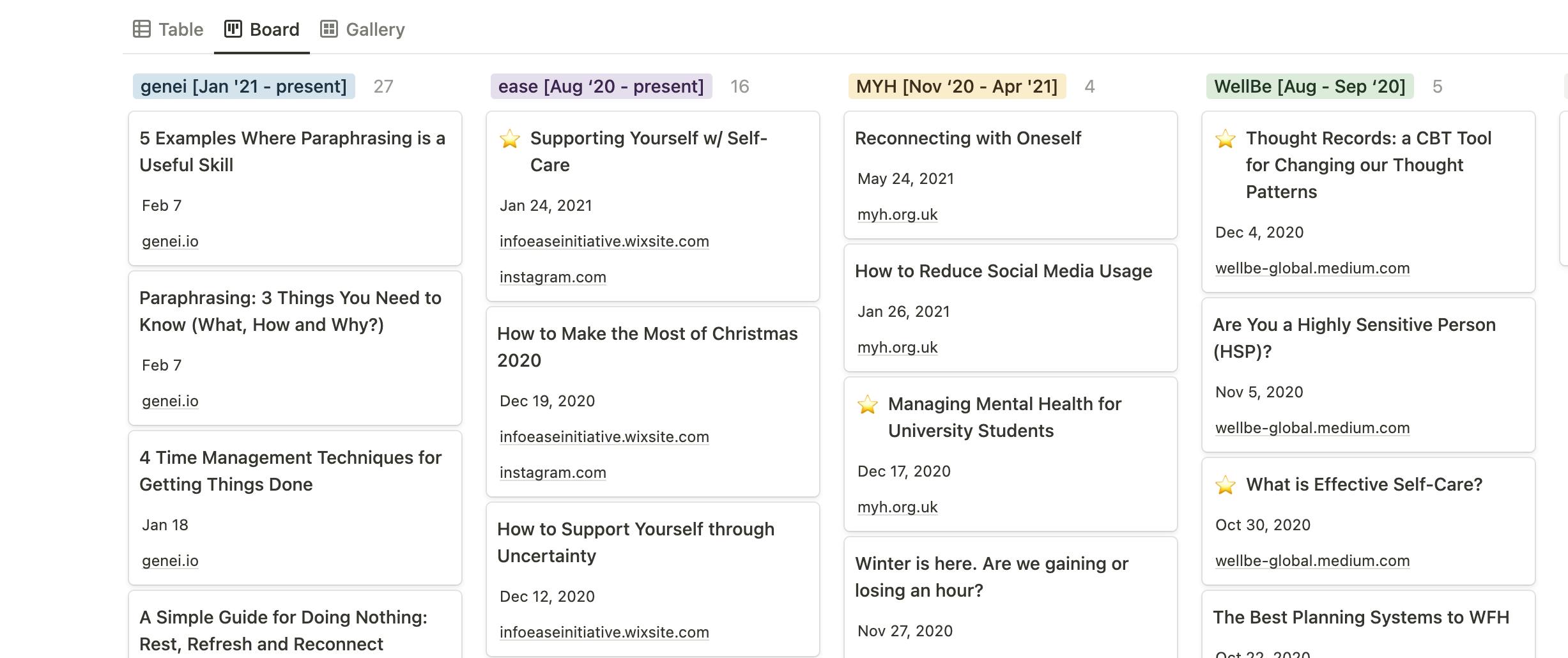
This is the exact same information, but now it's been organised and viewed in a new way. This means you could organise your writing by year, or view entries in other formats, such as a list or gallery. Once created, you can share this using a link that's generated by Notion in the 'share' settings or invite specific people to view the page.
Notion provides a simple, practical and easy way to keep track of your work. This is my approach to it, however, you could further customise this. You could start with a Notion page that introduces you, your experiences and expertise, and then have this Table either linked or embedded within that page. You can make your Notion writing portfolio as simple or complex as you like.
Canva
Later, I needed something more visual to share my writing work, especially to showcase things like social media copy, and short-form content. This led me back to Canva, a free online graphic design that I have previously used to design social media content. I used the Presentation option to begin outlining my content writing experience, and share links to my work.
I created 1-2 slides for each of my writing roles, and included some simple, short descriptions of what I do and who I worked for. I added screenshots to make it more visual, and hyperlinked the relevant posts onto each slide. Here's some examples:
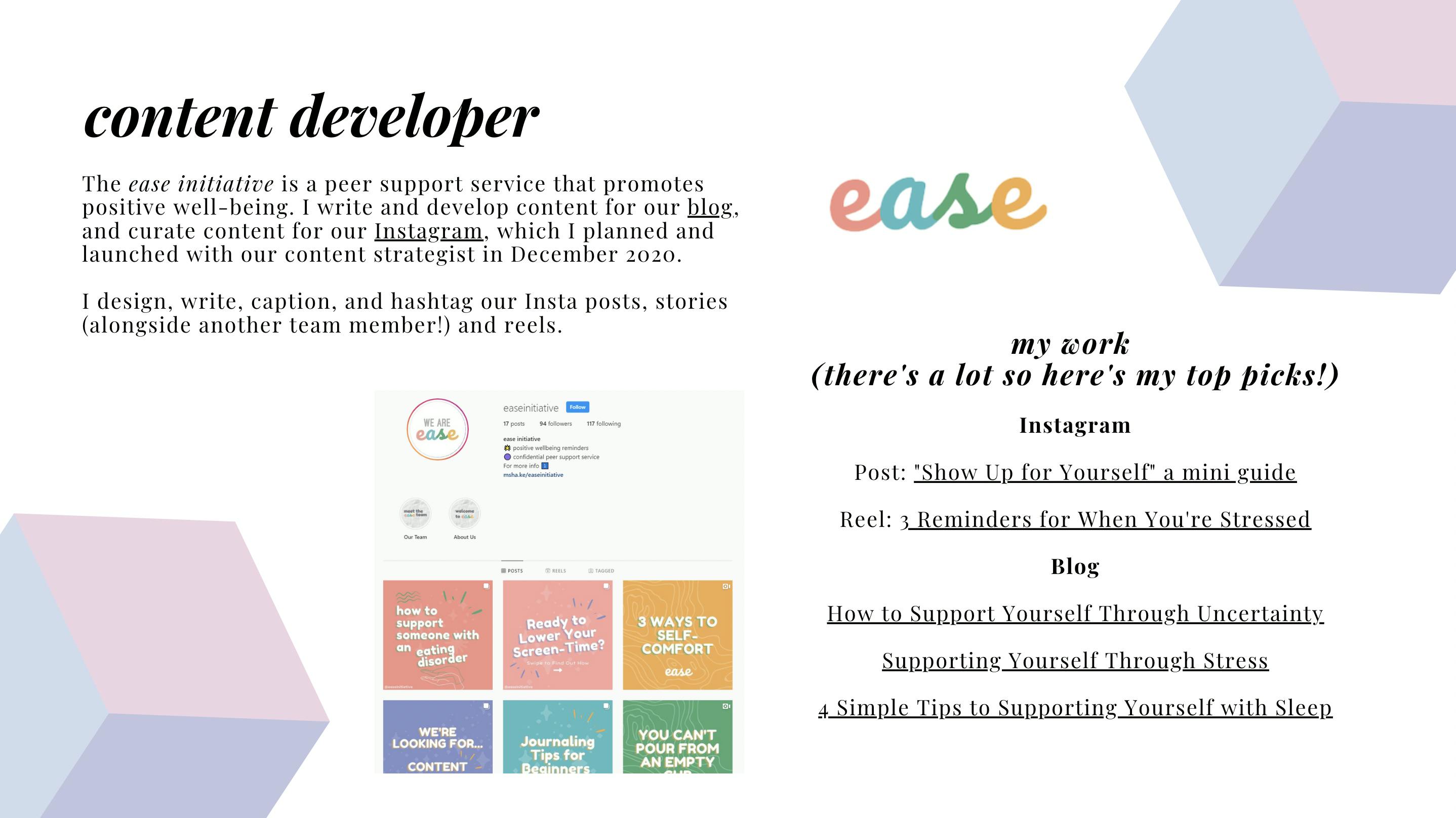
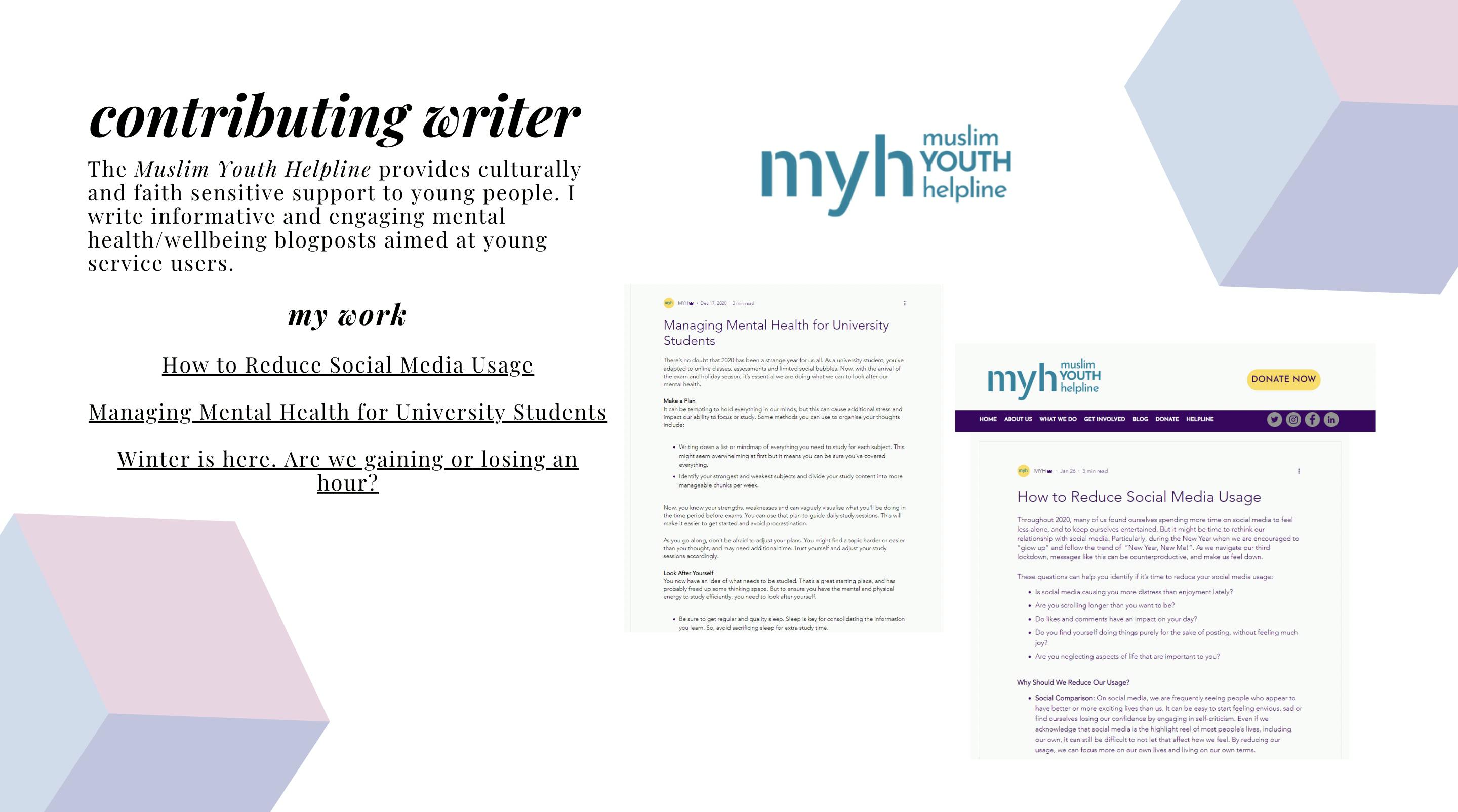
I could then share a link to this presentation, or download it as a PDF and share it to others directly. I linked my Notion writing portfolio on the Cover page of my presentation, and kept a link to my Canva writing portfolio in my Notion one.
I like to use Notion as a place to store all my work and Canva as a way to highlight my best work, or to showcase social media related content. You don't need both but I enjoy having options, and being able to share my work in different ways when I'm applying or reaching out for content writing work.
Carrd
Recently, I discovered Carrd, a free one-page website builder. Using a carrd.co domain, you can build and host a simple website here. I'm now looking to move my writing portfolio onto this site, and have already discovered a range of ways to customise it. You can add animations, custom colours, gradients, and backgrounds. Here's my very simply attempt to begin building my writing portfolio:
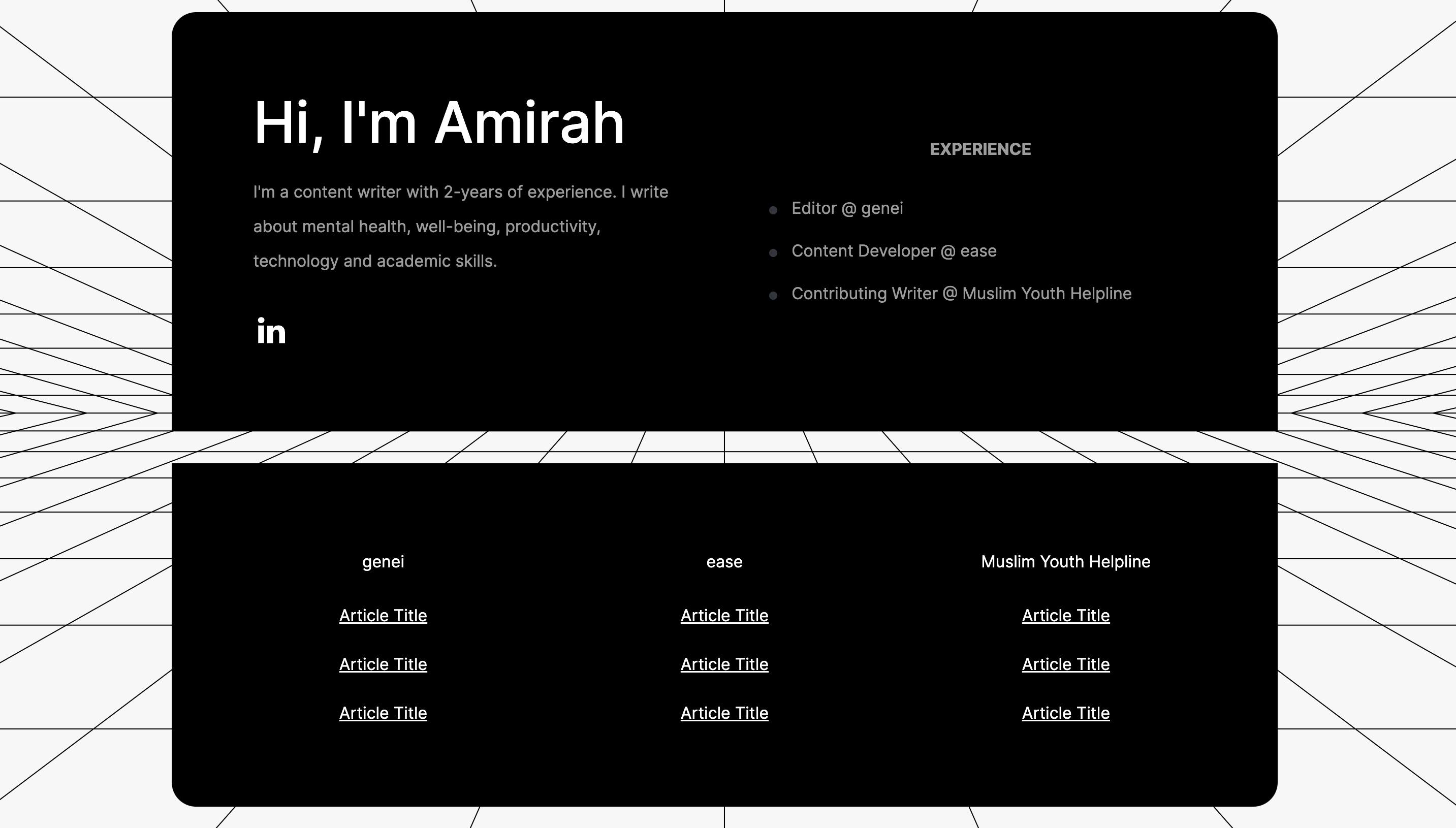
For this, I used one of Carrds existing templates and began to customise it. However, they have a range of templates that you can view and interact with. It's going to take me sometime to come up with a design, and get this to my liking. But I like the options for adding social links with icons, and contact buttons that direct the user to your email.
I think I'll always keep my Notion portfolio as my master collection but, Carrd will allow me to present myself more professionally as a freelancer, and share my work in a interactive and visual way.
Thanks for reading! If you have any questions or want writing portfolio advice, leave a comment.

